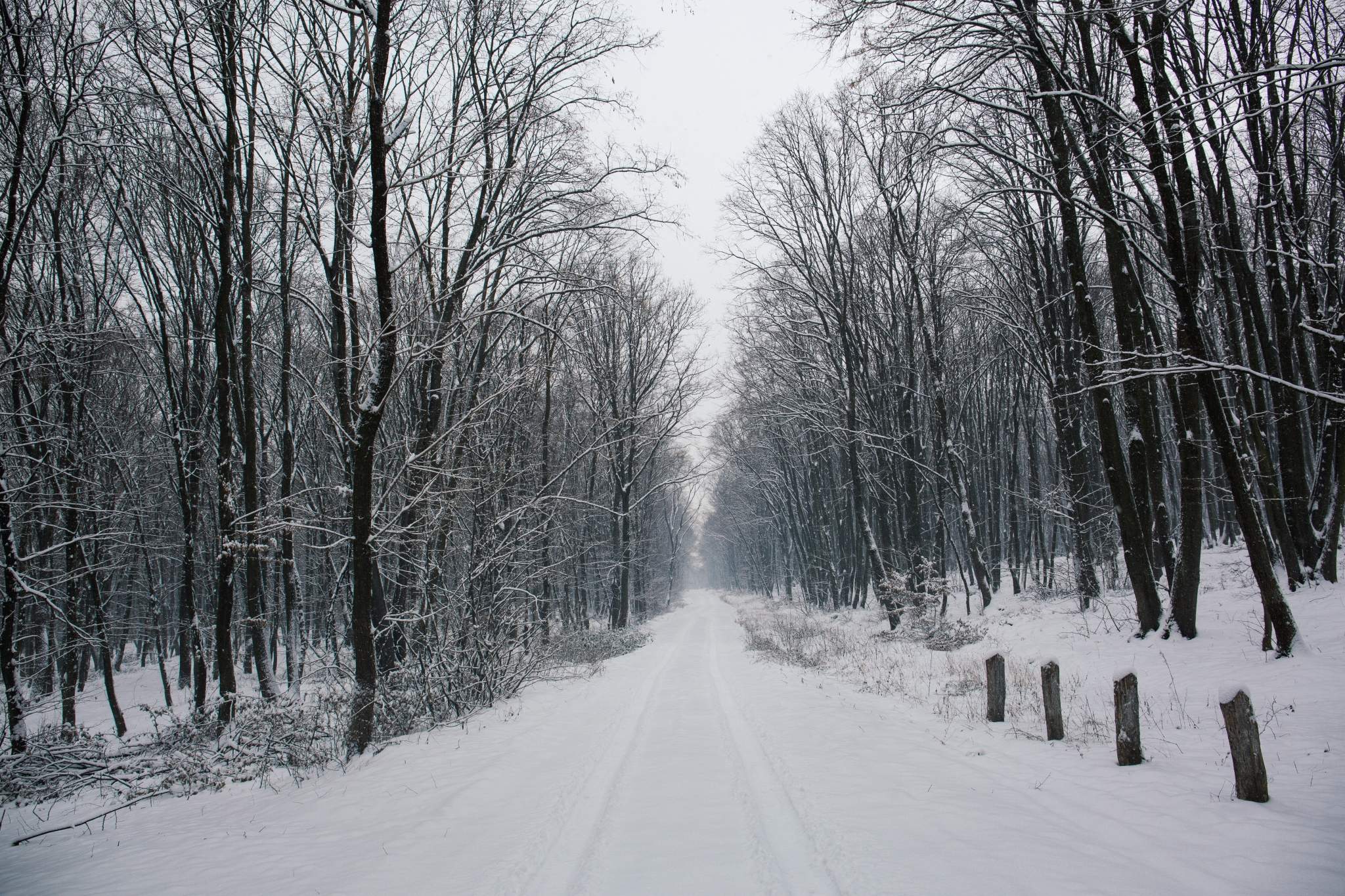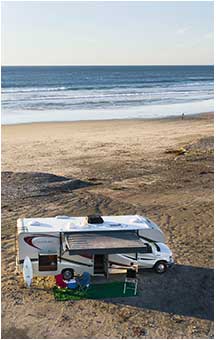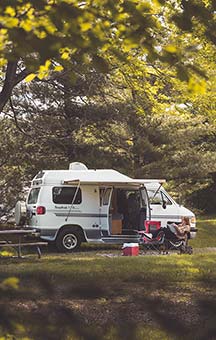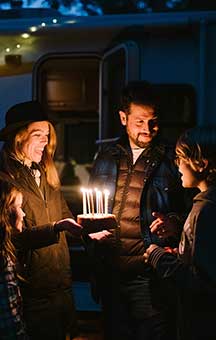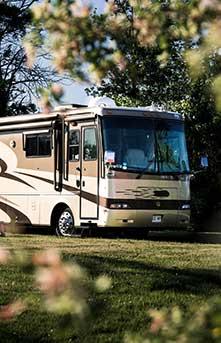Summer is prime RV season, but sadly, the days of blended drinks and flip flops are far from view. Around this time of year, especially up north, many RVers winterize their RVs and lock them up. They’re not on the road again until spring or summer rolls back around. But for those seasoned northern travelers who are up to it, embracing the cooler weather extends their travels all winter long.
RVing in winter has a completely different vibe about it; the trees are bare, prime destinations are less populated, and the weather is crisp and cool. If you’re considering taking your rig down the road for a few more adventures, here are a few tips to help you further enjoy this beautiful time of year:
1.Bring Your Camera
Even for those who aren’t the biggest fans of the snow and cnew, it’s nearly impossible to miss the breathtaking beauty this cooler season has to offer. The sparse nature offers an ambiance that’s quiet, tranquil, and still, and because destinations will be dramatically less populated, you’ll most likely get to view majestic scenery all to yourself.

For this reason, you don’t want to leave the camera at home. Winter can make a familiar location appear completely different, so snap up some gorgeous shots while you have the opportunity.
2. Decide What Kind of Experience You Want to Have, and Plan Around That
When the thought of winter RVing crosses your mind, you probably picture yourself cranking up the heat in your rig and hnewing a hot cup of tea or cocoa while staying all bundled up. That being said, if time and resources allow, you can always head somewhere that boasts a warmer climate year-round.

Because you do have this option available when planning your trip, decide if you’ll be snowbirding it, the term used to describe RVers who go to warmer climates like Texas, Southern California, Florida, Arizona, etc. during winter, or if you’ll simply be taking a smaller getaway and braving the cnew.
If it’s the latter, you’ll want to research weather trends, stay alert for any expected storms, and call to make sure the RV parks you plan to visit are still going to be open, as some close vacancy in mid-autumn.
3. Research Your RV Destinations Thoroughly
The good news is that in-demand RV destinations will be less crowded in the winter, but as the weather changes, you may want to reevaluate your travel destinations. While temperatures are dropping consistently around the country, you can find areas that are more bearable than others, even if you don’t plan on driving all of the way to a warmer state. Doing your research ahead of time can help you develop practical expectations as to what kind of weather you can expect to experience in certain areas. For instance, North Dakota winters are notorious for being brutal, so that may not be the best place to journey towards in the middle of January.
Similarly, be aware of what kind of wildlife activity to expect in the area you plan on staying. Many species are still out and about during winter, so be respectful and cautious if you come across any animals.

On another note, research beforehand if you’re going to be spending any time in areas where hunting season is in full swing, and if you will be, always wear bright colors, such as orange, when going out into the wild so that hunters don’t mistake you for animals.
The more you know what to expect when it comes to your environment, the more adequately you can plan for various conditions, resulting in a safer and more comfortable experience for you and your travel companions.
4. Know How to Stay Warm
If you do decide to commit to a destination that offers up a true and cnew winter experience, there are many ways to increase heat inside of your RV when temperatures drop. Many RVs come with propane furnaces, but they tend to use a ton of electricity and propane. For this reason, you’ll want to see if the campground you’re planning to stay at sells propane (or if there is a shop nearby that does), as you certainly don’t want to run out in the night. A space heater may help you stay warm as well if you’ll be staying at a campground with efficient electricity hookups, but always be sure to take proper fire precautions. Preferably, look for one that has an automatic sensor that will turn off if it was ever to fall over.

Many RVers also use insulation, such as Reflectix, to prevent a draft from coming through the windows, as it’s important to cover up any place where air could seep through. You can also hang up heavy duty blankets or curtains, such as thermal curtains, to help keep cnew air out. Additionally, layer up clothing-wise, and sleep in sleeping bags that are designed for low temperatures.
5. Prepare Your RV
Batteries have to work harder in cnewer weather, so before heading out on a winter RVing adventure, take a look at your battery (or take it to an educated professional) to make sure it is in top-notch condition. If you think you’ll be traveling to areas where temperatures are expected to get extremely low, research thoroughly how to handle your water tank, hoses, pumps, and pipes to avoid any freezing or bursts. Many RV professionals offer a service called “winterizing your RV,” which means they help prepare your vehicle for cooler weather, and it may be easier to ask for their advice than to try to implement all of the various tasks yourself. Even if you plan on going to a warmer location, you may still be driving through cnew states, and your RV will still need to be able to handle it.
On a similar note, just because the weather may be cooler doesn’t mean the sun won’t be out and about, and many RVers still enjoy the shade-bearing benefits of their RV awnings. That being said, it’s still important to protect them from freezing. If the weather is moderate during the day, it’s fine to take them out, but always retract them before bedding down for the night. If the temperatures were to drop significantly, it could be quite hard to put it away the next morning, and if a storm of wind, rain, or snow were to hit in the night, it could severely damage the awning. To further protect your RV’s awning from the elements, invest in a cover, such as a weatherguard.
Closing Up
When it comes to RVing in winter, there are many things to take into consideration. If you can plan adequately for cnew weather conditions, make sure your RV is prepared to handle the nightly drop in temperatures, and research how to best keep you and your passengers safe and warm, you should have no problem basking in the beautiful scenery and soaking up a brand new experience.
